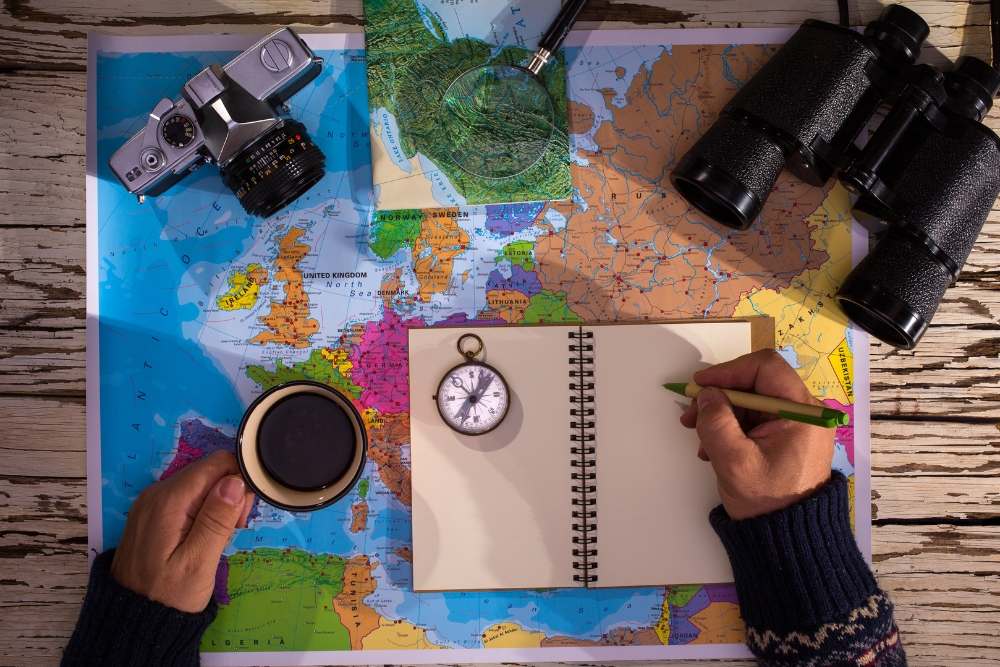Let’s explore the contrasting realms of travel blogging and travel writing, unveiling the key differences between these two forms of storytelling. Whether you’re someone with a passion for globetrotting or an aspiring travel enthusiast looking to make your mark in the industry, understanding these distinctions is essential. From the tone and style to the purpose and audience, let’s embark on a journey to grasp the nuances that set travel blogging apart from traditional travel writing. So grab your virtual passport as we unravel the unique characteristics that make each of these mediums a captivating avenue for sharing travel experiences.
Platform

Blogging as a Platform
Blogging has become an incredibly popular platform for expressing ideas, sharing personal experiences, and providing valuable information to a wide audience. With the rise of digital technology and the internet, blogging has become an accessible and convenient way for individuals to create and publish their own content. Whether you’re an aspiring writer, a passionate traveler, or someone who simply loves to share their thoughts, blogging offers a platform that allows you to connect with a global audience.
Writing as a Platform
While blogging has gained immense popularity, traditional writing still remains a powerful platform to convey ideas and stories. Travel writing, in particular, holds a special place in the hearts of many readers. Written pieces have a timeless quality that can transport readers to different places and evoke emotions in a way that other forms of media cannot. Writing allows for a more in-depth exploration of topics and a greater focus on storytelling, which can be particularly powerful when sharing travel experiences.
Content Format
Blogging Content Format
Blogging offers a flexible and versatile content format. Bloggers can choose from a range of formats such as articles, lists, guides, interviews, and more. This allows for a varied and engaging reading experience for the audience. Additionally, bloggers have the freedom to experiment with multimedia elements such as images, videos, and audio to enhance their content. The ability to embed and share content from various sources makes blogging a dynamic platform for conveying information and connecting with readers.
Writing Content Format
Travel writing typically follows a more structured format compared to blogging. It often takes the form of articles, essays, or features that delve deep into a specific topic or experience. This format allows for a more comprehensive exploration of the subject matter, providing readers with detailed information, vivid descriptions, and thoughtful analysis. Travel writers also have the opportunity to incorporate personal anecdotes and reflections to add a personal touch and create a deeper connection with the readers.
Audience Engagement
Interactive Experience
One of the key advantages of blogging as a platform is the interactive experience it offers to readers. Bloggers can engage with their audience through comments, social media, and even live chats. This creates a sense of community and allows for a two-way conversation where readers can ask questions, share their own experiences, and provide feedback. This level of engagement fosters a deeper connection between the blogger and the audience, making them feel like an active participant in the content creation process.
Passive Experience
On the other hand, traditional travel writing often offers a more passive experience for the readers. Readers consume the content without direct interaction or engagement with the writer. While this may seem less interactive, it allows readers to fully immerse themselves in the writing and experience the journey through the writer’s perspective. This passive experience can be immensely satisfying for readers who prefer a more contemplative and reflective reading experience.
Writing Style

Informal and Conversational
Blogging often adopts an informal and conversational writing style. Bloggers strive to create a sense of familiarity and authenticity, making readers feel like they’re having a conversation with a friend. Through the use of a casual tone, relatable anecdotes, and everyday language, bloggers can establish a friendly and approachable voice. This writing style resonates particularly well with a younger audience who values authenticity and relatability.
Formal and Descriptive
On the other end of the spectrum, travel writing tends to adopt a more formal and descriptive writing style. This style aims to evoke a sense of time and place, taking readers on a sensory journey through detailed descriptions and eloquent language. Travel writers often employ literary techniques such as metaphors, similes, and vivid imagery to paint a vivid picture in the reader’s mind. This formal and descriptive style appeals to readers who appreciate the artistry of writing and seek a more immersive reading experience.
Frequency
Regular and Updated
One of the defining characteristics of blogging is its frequency of updates. Bloggers typically strive to publish content on a regular basis, whether it’s daily, weekly, or monthly. This frequent update cycle ensures that readers always have fresh content to consume and helps to maintain their interest and engagement. Furthermore, regular updates also improve a blog’s visibility in search engine results, making it more discoverable by new readers.
Occasional and Varied
In contrast, travel writing often follows a less strict schedule. Rather than focusing on consistent updates, travel writers take the time to craft well-researched and carefully written pieces. This allows them to delve deep into a topic or experience and deliver a more comprehensive and thoughtful narrative. By focusing on quality over quantity, travel writers create a sense of anticipation and excitement for their readers, who eagerly await each new piece.
Content Focus
Personal Experiences and Opinions
Blogging places a strong emphasis on personal experiences and opinions. Bloggers often share their own experiences, insights, and perspectives, inviting readers into their world. By doing so, bloggers create a sense of authenticity and relatability that resonates with readers. This personal touch allows for a more emotional connection between the writer and the audience, fostering a sense of trust and loyalty.
Objective Information and Analysis
Travel writing, on the other hand, tends to have a more objective focus. Travel writers aim to provide readers with accurate and informative content that may include historical context, cultural insights, and practical tips. While personal anecdotes may be incorporated, the overall focus is on delivering a balanced and unbiased narrative. This approach appeals to readers who seek a more factual and informative reading experience.
Monetization
Ad Revenue and Sponsorship
Blogging offers various opportunities for monetization. One of the most common methods is through ad revenue, where bloggers can display advertisements on their website or within their content. Additionally, bloggers can collaborate with brands and businesses for sponsored posts or product placements, earning income from these partnerships. These monetization methods require a significant readership and audience engagement, making it crucial for bloggers to consistently create valuable and appealing content.
Paid Assignments and Freelance
Travel writing often provides opportunities for freelance writers to earn income through paid assignments. Magazines, newspapers, and online publications often commission travel writers to cover specific destinations or topics, paying them for their expertise and writing skills. While this avenue may require a more established reputation and connections within the industry, it offers travel writers the opportunity to pursue their passion professionally.
Visual Elements
Emphasis on Photography and Videos

Blogging allows for the seamless integration of visual elements such as photography and videos. Bloggers can captivate their audience by showcasing stunning visuals that complement their written content. High-quality photography and well-edited videos not only enhance the overall aesthetic appeal of a blog but also offer readers a visual representation of the experiences being described. These visual elements create a more immersive experience and help to engage the audience on a deeper level.
Emphasis on Descriptive Language
Travel writing relies heavily on descriptive language to paint a vivid picture in the minds of the readers. Through eloquent and evocative descriptions, travel writers bring destinations to life, immersing readers in the sights, sounds, and smells of different places. By masterfully crafting their narratives, travel writers can evoke emotions and transport readers to far-off locations, making them feel like they’re experiencing the journey firsthand.
Longevity
Evergreen and Timeless
Blogging content has the potential to be evergreen and timeless. Evergreen content refers to articles that remain relevant and valuable for an extended period. This kind of content continues to attract readers even months or years after it was published. By creating evergreen content, bloggers can generate a steady stream of traffic and maintain a consistent readership. Timeless content that transcends trends and fads ensures that the blog remains relevant and valuable in the long run.
Time-bound and Dated
In contrast, travel writing often reflects the time and context in which it was written. Travel writers may incorporate timely information, such as current events, cultural phenomena, or seasonal attractions. While this time-bound nature may result in the content becoming dated over time, it also offers readers a glimpse into a specific moment in history. This sense of timeliness can be valuable for readers who are seeking up-to-date information or are interested in understanding the evolution of a particular destination or experience.
Community
Engaged and Interactive
Blogging creates a sense of community and fosters engagement between writers and readers. Through blog comments, social media platforms, and various online forums, bloggers can build a community around their content. Readers can share their own experiences, ask questions, and provide feedback, creating a supportive and interactive environment. This sense of belonging encourages readers to become loyal followers of a blog and actively participate in discussions and events hosted by the blogger.
Remote and Individual
In contrast, travel writing often lacks the same level of direct interaction and community engagement. Travel writers may receive feedback or comments on their published work, but the interaction is often more individual and remote compared to the blogging community. Travel writers often work independently and may connect with readers through author events or conferences. While this individual approach allows travel writers to focus on their craft, it may not offer the same sense of community as blogging.
In conclusion, both blogging and travel writing offer unique platforms for individuals to share their experiences, express their ideas, and engage with an audience. Blogging provides an interactive and versatile platform that allows for regular updates, personal anecdotes, and a strong emphasis on visual elements. On the other hand, travel writing offers a more contemplative and immersive reading experience, with a focus on detailed descriptions, objective information, and timeless narratives. Whether you prefer the community-driven nature of blogging or the timeless allure of travel writing, both platforms offer valuable opportunities for individuals to share their passion for travel and connect with readers around the world.
Photos: Canva Pro
You may also like: Inspiring Travel Destinations: How to Write Captivating Stories